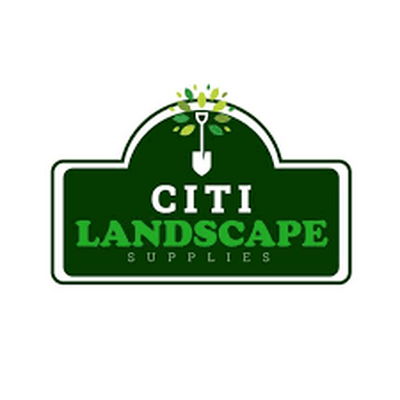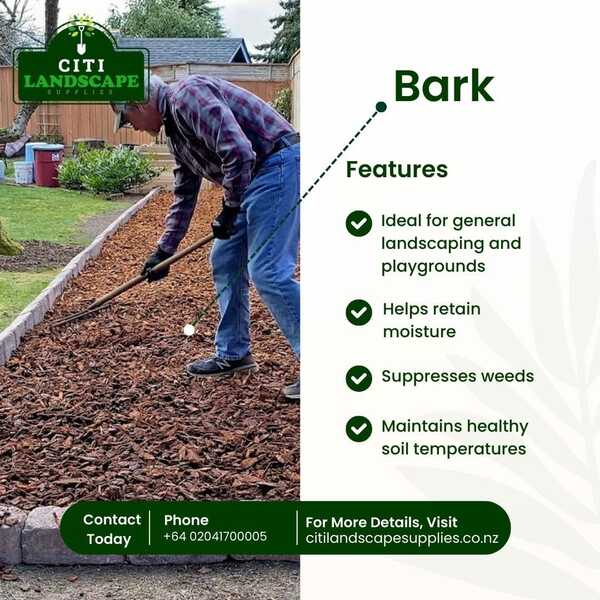Notifications
ALL BUSINESS
COMIDA
DIRECTORIES
ENTERTAINMENT
FINER THINGS
HEALTH
MARKETPLACE
MEMBER's ONLY
MONEY MATTER$
MOTIVATIONAL
NEWS & WEATHER
TECHNOLOGIA
TV NETWORKS
VIDEOS
VOTE USA 2026/2028
INVESTOR RELATIONS
DEV FOR 2025 / 2026
ALL BUSINESS
COMIDA
DIRECTORIES
ENTERTAINMENT
FINER THINGS
HEALTH
MARKETPLACE
MEMBER's ONLY
MONEY MATTER$
MOTIVATIONAL
NEWS & WEATHER
TECHNOLOGIA
TV NETWORKS
VIDEOS
VOTE USA 2026/2028
INVESTOR RELATIONS
DEV FOR 2025 / 2026
About Me
 Citi Landscape Supplies
Citi Landscape Supplies Landscape & Garden Supplies Auckland: We sell range of landscape products deliver Auckland NZ wide at an affordable price. At our online & physical store we sell Firth Permeable Concrete Pavers, Retaining, Top soil, Black mulch, Red mulch, Aggregates, Drainage Scoria, garden edge etc.
Citi Landscape Supplies 7 hours ago 36 views 0 Comments 0 Likes 0 Reviews decorative mulch decorative bark Weed Care

Your garden is more than just a patch of greenery; it's a reflection of your style, lifestyle, and connection to the outdoors. Whether you're curating a serene retreat, a family-friendly play space, or a low-maintenance haven, the ground covering you choose plays a surprisingly big role in achieving the overall look and functionality. Two popular contenders in this space are decorative bark and gravel. But which is better suited to your garden’s unique personality?
In this guide, we’ll dig deep (pun intended) into the pros, cons, and perfect-fit scenarios for each, so you can make an informed decision with confidence.
Understanding the Basics: What Are Decorative Bark and Gravel?
Decorative Bark, also known as decorative mulch, is made from shredded tree bark—typically pine, spruce, or other softwoods. It's widely used as a natural ground cover that offers a soft, earthy aesthetic. It can come in various chip sizes, from fine mulch to larger bark nuggets.
On the other hand, gravel refers to small, loose stones available in a wide range of colours, shapes, and sizes. Whether it's river pebbles, crushed granite, or decorative aggregates, gravel can create a modern or rustic look depending on its application.
Aesthetic Appeal: Natural Warmth vs. Clean Precision
Your garden's visual identity often dictates which material will work best.
Decorative Bark brings a sense of natural softness and woodland charm. It’s ideal for gardens with lush greenery, curved borders, and informal layouts. Its earthy tones blend seamlessly with plants, creating a cozy, lived-in feel.
Gravel, on the other hand, offers sharper, more structured visual appeal. Perfect for minimalist, contemporary, or Mediterranean-style gardens, gravel creates crisp lines and a clean backdrop for architectural plants or hardscaping features.
Example: A native New Zealand garden with ferns and flaxes would look stunning with bark as it complements the local flora. Meanwhile, a sleek courtyard with succulents and sculptural features would benefit from gravel’s modern finish.
Functionality: Beyond the Surface
Let’s break down what each material does beyond looking pretty.
Weed suppression: When used with geotextile fabric, bark is excellent at minimizing weed growth.
Moisture retention: It helps keep the soil moist, which is especially beneficial during dry spells.
Soil insulation: Bark moderates soil temperatures, protecting roots in both hot and cold weather.
Decomposable: It breaks down over time, adding nutrients back into the soil.
Drainage: Gravel excels at drainage, making it ideal for areas that tend to get soggy.
Durability: Gravel doesn’t decompose, so it lasts longer with minimal maintenance.
Low maintenance: Once installed properly, gravel rarely needs replacing or topping up.
Weed control: Similar to bark, it can also be paired with geotextile fabric for enhanced weed care.
Cost and Maintenance: The Long-Term Picture
Bark is generally easier and quicker to lay down.
Gravel requires a solid foundation, usually involving levelling and compacting the ground. You may also need a sub-base like GAP 40 to stabilise it.
Bark needs to be topped up every 1-2 years as it decomposes or blows away.
Gravel rarely needs replacement but may need occasional raking to even out the surface.
Bark is typically cheaper upfront.
Gravel can be more expensive initially due to preparation, but lower maintenance costs can balance this out over time.
Environmental Impact: Thinking Green
Both options have eco-friendly potential, depending on how they are sourced and used.
Decorative Bark is biodegradable and adds organic matter to the soil. Opting for sustainably sourced bark enhances its green credentials.
Gravel doesn’t decompose but is reusable and long-lasting. It also doesn’t contribute to landfill waste over time.
Use bark in planting areas to nourish the soil and gravel in high-traffic paths or patios where longevity matters more than decomposition.
Safety and Comfort: Barefoot or Boots?
Comfort might not be the first thing you think of when choosing ground cover, but it matters—especially if you have kids or pets.
Bark is soft, cushioning falls and making it safer for children’s play areas. It's also more forgiving on paws.
Gravel can be sharp, and smaller stones may end up in shoes or be kicked around. However, finer grades are more foot-friendly.
Seasonal Performance: Summer, Winter, and Everything In Between
Decorative mulch like bark performs well across seasons by insulating soil and preventing it from drying out or freezing.
Gravel can get hot under foot during summer and may feel cold and hard during winter. However, it won’t rot or grow mould in wet conditions.
Real-Life Case Study: A Tale of Two Gardens in Auckland
The Bark-Laden Backyard: A family in Auckland's North Shore transformed their shaded, plant-filled backyard into a woodland retreat using decorative bark. With kids and dogs constantly playing, bark proved soft, safe, and nurturing for the soil. Combined with native ferns and timber borders, it created a cohesive, tranquil vibe.
The Gravel Courtyard: A couple in central Auckland opted for gravel in their sunny urban courtyard. With no lawn and lots of container plants, gravel provided excellent drainage and a clean, sophisticated backdrop for olive trees, succulents, and a small fire pit. Weed control was managed using geotextile fabric beneath the gravel.
Which One Wins? It Depends on Your Garden’s Personality
Let’s wrap it up by profiling the "personality types" that match each option.
You love a natural, earthy aesthetic.
You have lots of planting beds or shaded areas.
Kids or pets play in your garden.
You want to improve soil quality over time.
You're aiming for a low-cost, organic look.
You prefer a clean, structured, and modern look.
Your garden includes paths, driveways, or patios.
Drainage is a concern.
You want something low maintenance and durable.
You’re working with full sun and minimal vegetation.
Final Thoughts: Blending Both for Best Results
Here's a secret: you don't always have to choose. Many stunning gardens successfully blend bark and gravel, using bark around plants and gravel for walkways or seating areas. This hybrid approach offers the best of both worlds in aesthetics and function.
Whichever material you lean toward, start by evaluating your garden’s needs, your personal style, and how much maintenance you're comfortable with. And don’t forget to use quality materials like decorative mulch, garden mulch in Auckland, and GAP 40 to ensure lasting impact.
With the right combination, your outdoor space can be both beautiful and perfectly aligned with your garden’s unique personality.

Comments